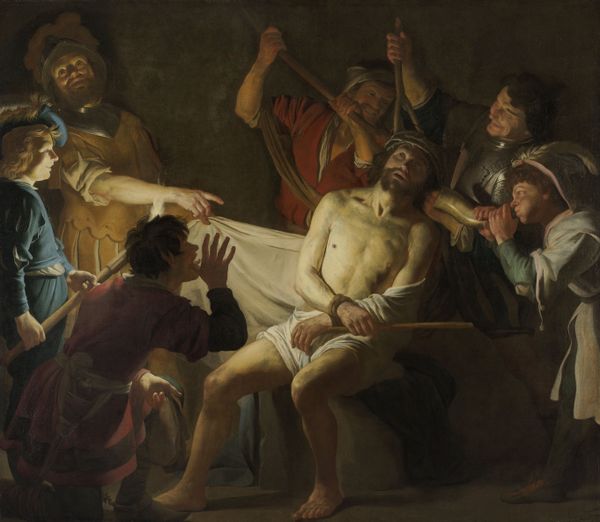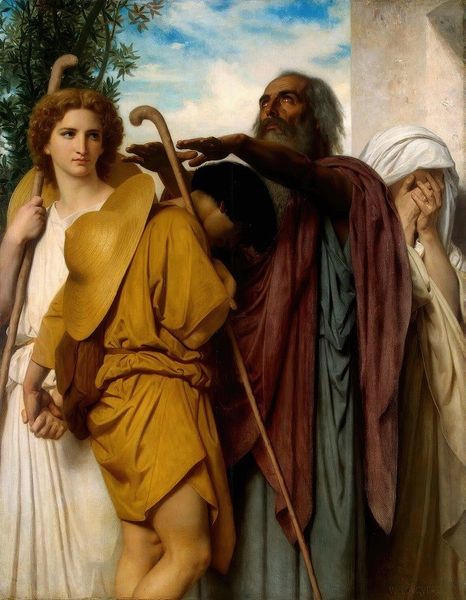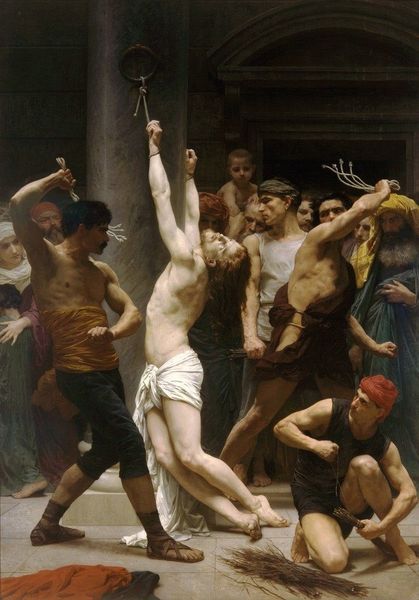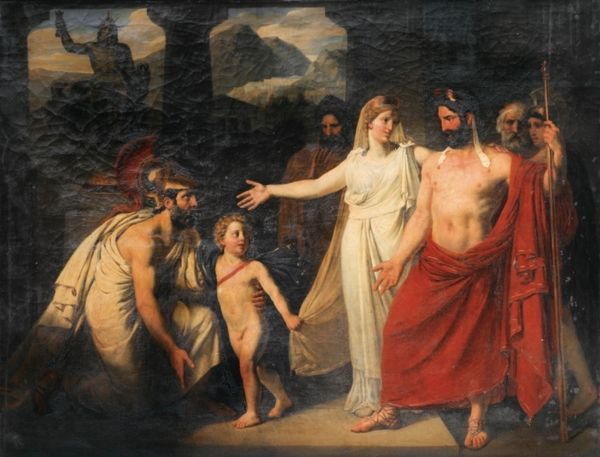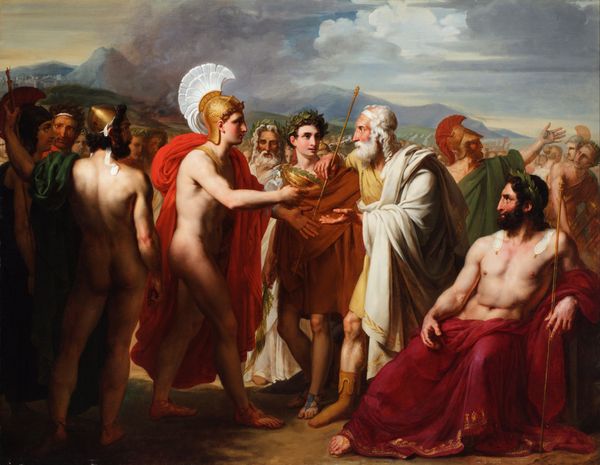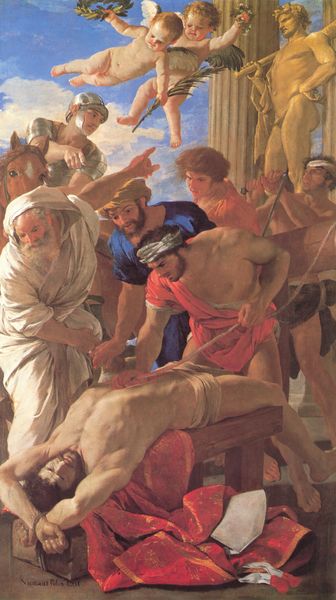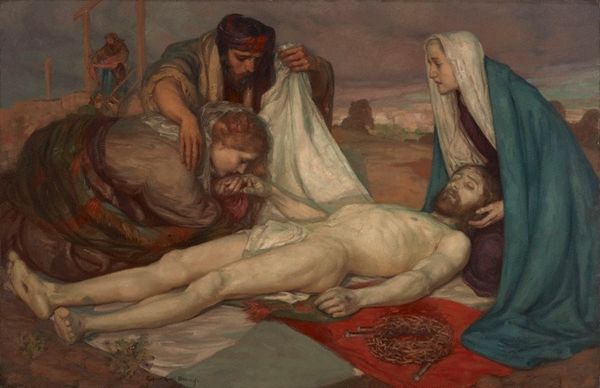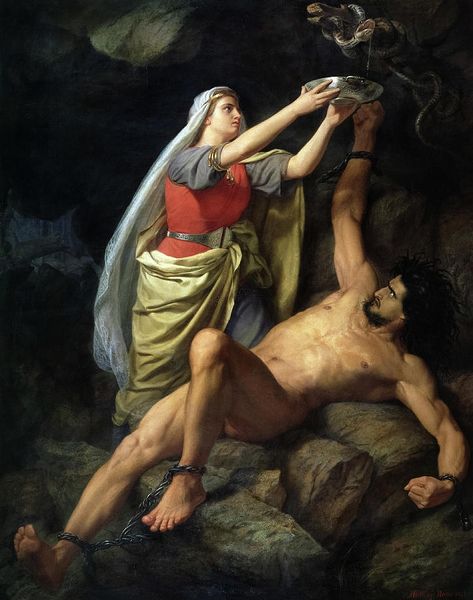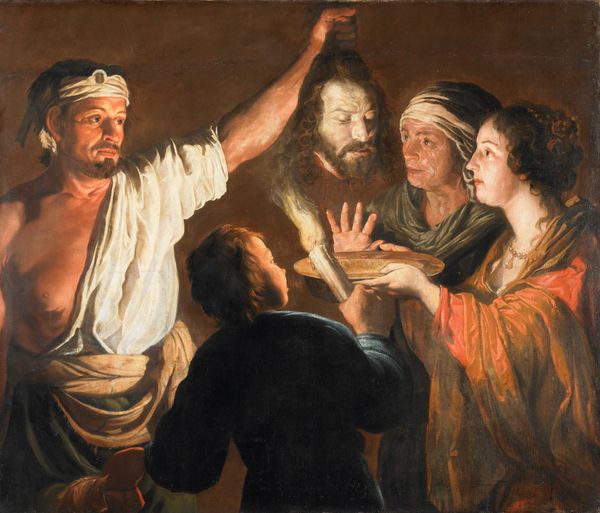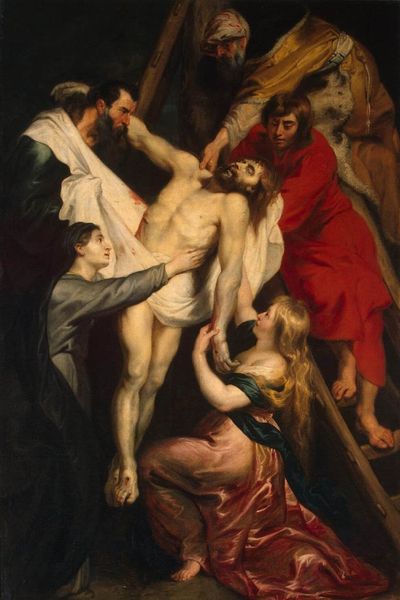
Copyright: Public domain
Curator: The tempestuous scene depicted before us is Émile Friant's 1883 canvas, "Oedipus curses his son Polynices." Editor: My immediate impression is of immense turmoil. The angular forms, the raw musculature, even the distraught expressions… they all combine to convey profound psychological distress. Curator: Absolutely. Friant was deeply influenced by academic traditions, evident in his meticulous attention to anatomy and detail. But what is the socio-political resonance of presenting this specific mythic narrative in 1883? What did Oedipus symbolize? Editor: Beyond narrative content, the composition arrests me. Notice how Oedipus, the central figure, disrupts the picture plane. His raised arm cleaves the space, an embodiment of the rupture within his family. And consider the earth tones...they serve not only to situate the figures in time but function as a structural grounding. Curator: And what does this curse mean to those present? There is a palpable sense of inevitability hanging in the balance. We understand that Oedipus’ sons are figures caught in political intrigue as well, engaged in a power struggle with dynastic implications for Thebes. Friant offers us an allegory on the consequences of internal strife. Editor: An allegory for a time grappling with social unease. The faces of onlookers become secondary to Oedipus himself, whose raw emotion embodies internal tension. In addition, his nearly naked physique heightens a sense of rawness, stripping him down and underscoring an essential humanity laid bare before us. Curator: Friant places emphasis on Oedipus and the political turmoil roiling Thebes but there are clear stylistic echoes here, pulling from classical, romantic and academic painting traditions. Editor: The dramatic flair reminds me a bit of Delacroix but there is a structured, organized clarity here that transcends purely emotive theatrics. I note especially, for instance, how Oedipus’ robe drapes to both veil and emphasize musculature and strength. Curator: The political potency of that image shouldn't be dismissed in Friant's context. The way he depicted historical or mythological narrative resonated within larger conversations happening at the time. Editor: An excellent demonstration of the artist working through a historically recognized and popularized subject by using technical arrangements. What appears at first as bombastic narrative turns out to be an exercise in structural rendering and controlled chromatic decisions.
Comments
No comments
Be the first to comment and join the conversation on the ultimate creative platform.
